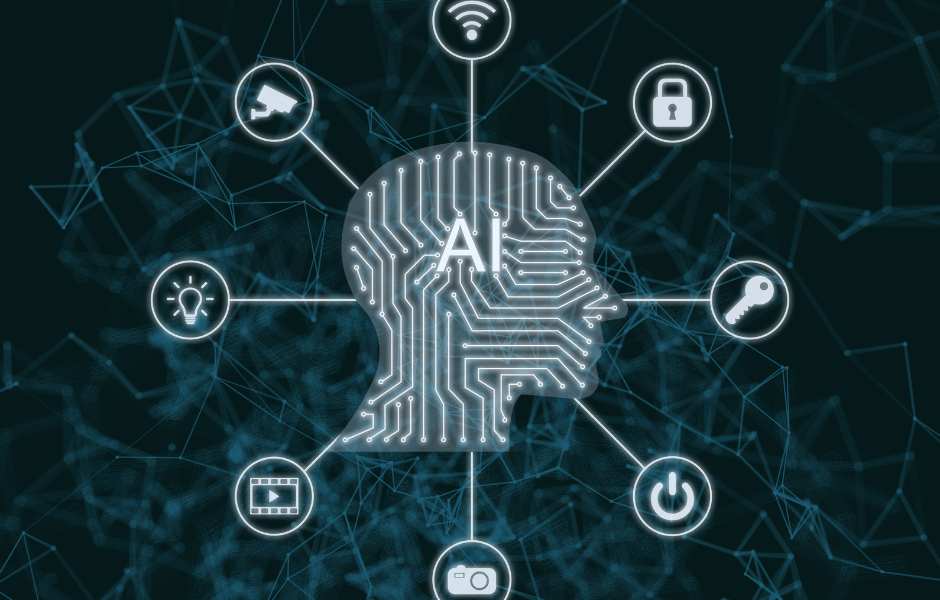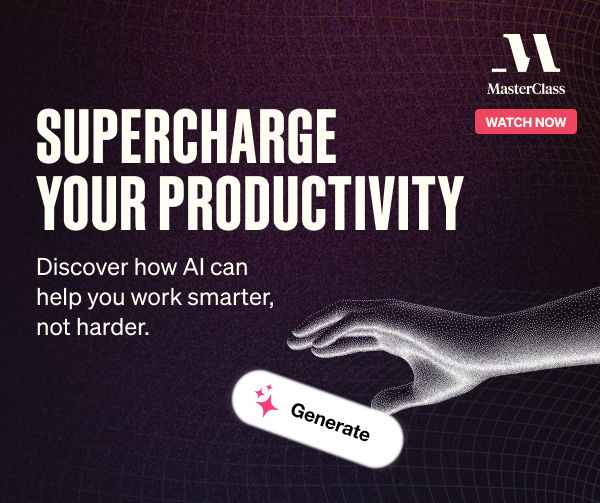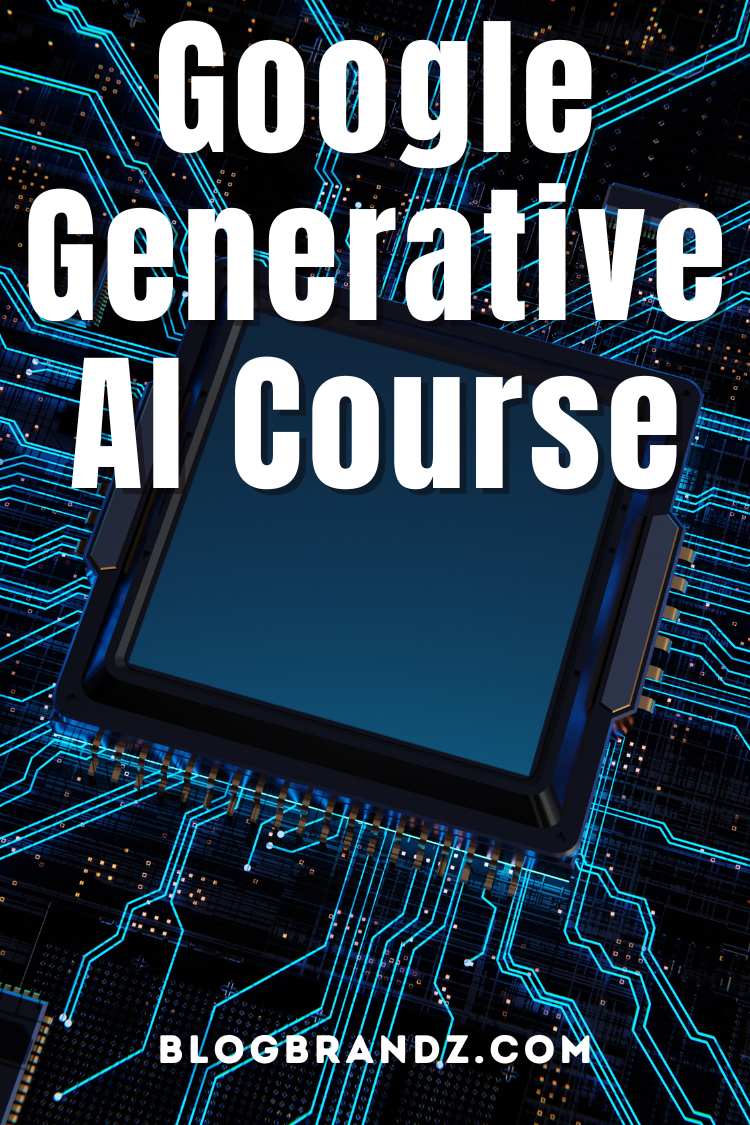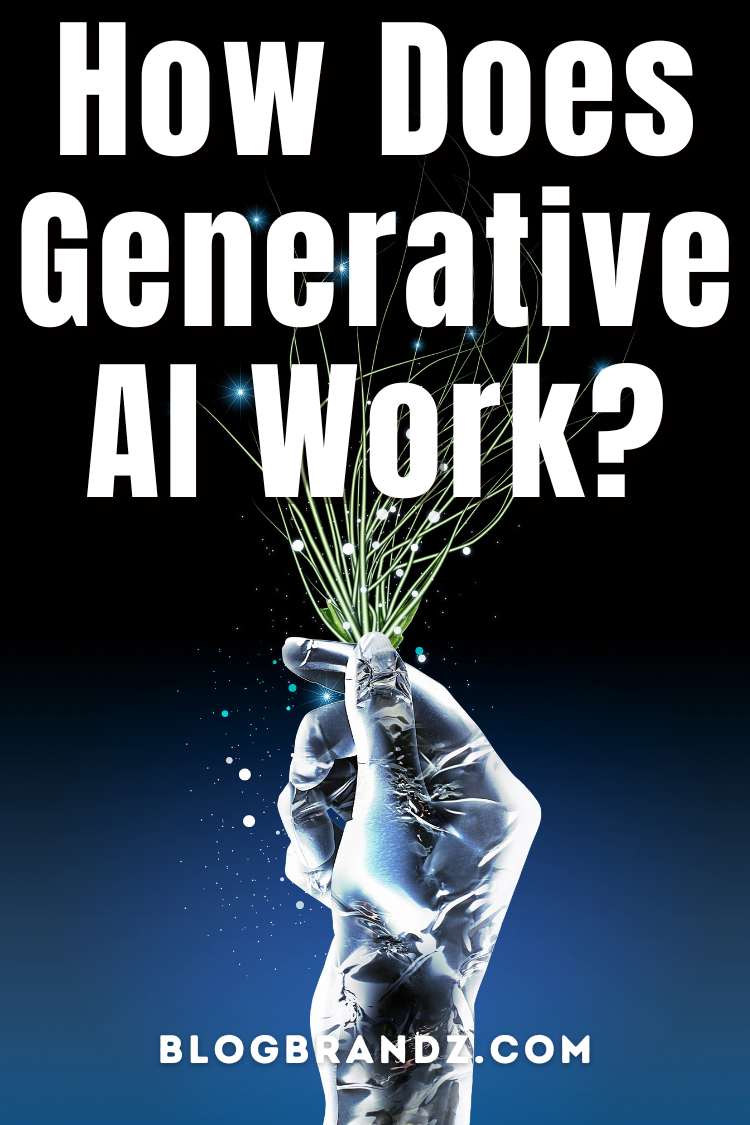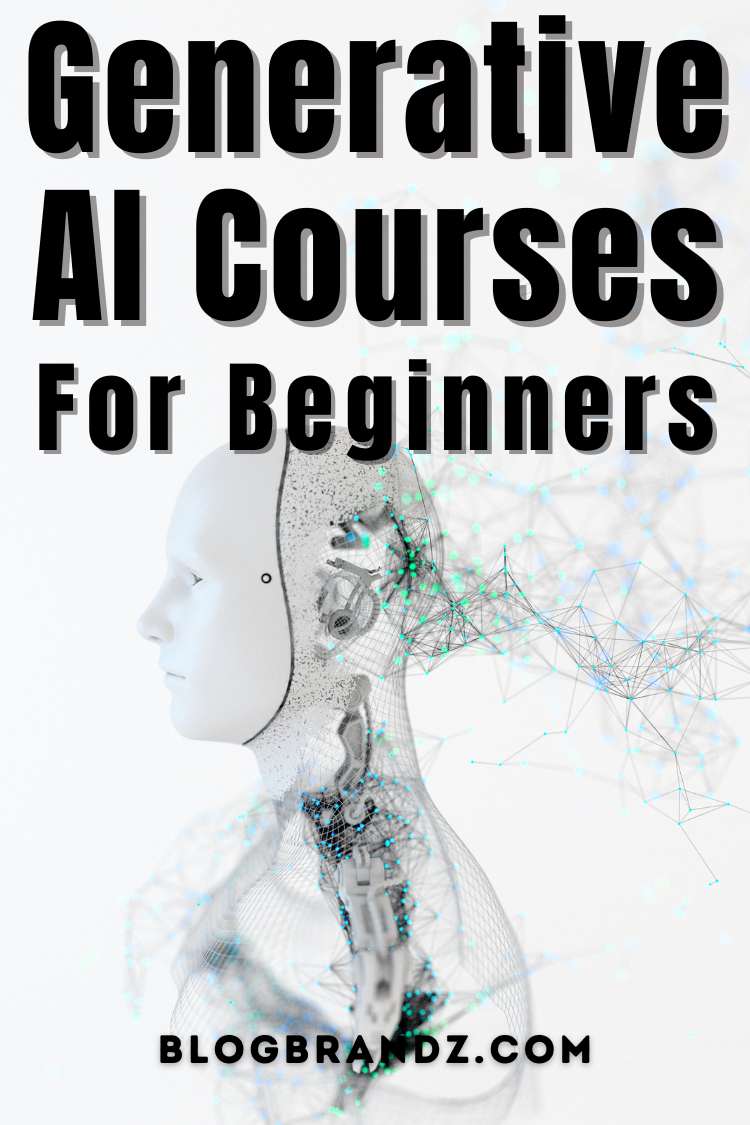
Elevate your career or transform your business with generative AI courses. Discover what generative AI is and how generative AI works.
Generative AI offers powerful tools and capabilities that can significantly enhance various aspects of your business to improve efficiency, personalize customer experiences, innovate product development, and gain a competitive edge in the market.
According to research by the Oxford Internet Institute and the Center for Social Data Science at the University of Copenhagen, employees proficient in artificial intelligence are deemed “especially valuable” in today’s job market.
These individuals typically earn salaries 21% above the average, with the potential for earnings to be as much as 40% higher. This premium is partly due to the ability to pair AI skills with other highly sought-after competencies.
“Employees proficient in AI earn salaries 21% above average, potentially reaching up to 40% higher.”
Contents
What is Generative AI?
Generative AI definition: Generative AI refers to a subset of artificial intelligence models and systems capable of creating new content, such as text, images, music, or other media, that mimics or resembles human-created content.
Generative AI Tools and Platforms
Here are some popular generative AI tools and platforms that can help you apply AI to real-world scenarios:
- OpenAI’s GPT-4 and ChatGPT: For text generation, content creation, and customer support.
- DALL-E, Midjourney, and Stable Diffusion: For generating images, illustrations, and visual content.
- Synthesia and Rephrase.ai: For creating AI-generated videos and personalized video messages.
- Copy.ai, Jasper, and Writesonic: For generating marketing copy, social media content, and email campaigns.
- Tabnine and GitHub Copilot: For code generation and software development assistance.
Best Generative AI Courses
Generative AI courses can unlock the future of business innovation by providing entrepreneurs and professionals with the tools and skills needed to harness the potential of AI-driven creativity.
Explore the best generative AI certifications that provide a comprehensive understanding of AI models with hands-on experience from industry leaders, to create innovative solutions that transform your business or land generative AI jobs.
#1. Google’s Introduction to Generative AI Learning Path Specialization
This comprehensive Google AI course is an introduction to generative AI, including large language models (LLMs) and their diverse applications. The Google generative AI course explores the foundations of LLMs and emphasizes the ethical considerations essential for responsible AI development and deployment.
Throughout this Google free AI course, participants engage with interactive quizzes that reinforce learning and assess comprehension of key concepts and terminology, offering immediate feedback to guide further exploration. Whether new to AI or looking to enhance your knowledge, this free Google AI course offers a robust learning experience.
Preview this Google generative AI course
#2. Deeplearning.ai GenAI for Software Development Skill Certificate
The Generative AI for Software Development Skill Certificate empowers learners to integrate AI into their development workflow, enhancing their skills, advancing their careers, and maintaining competitiveness in a fast-paced industry.
- Understand LLMs: Gain insights into how machine learning systems operate to effectively utilize them in your development work.
- Rapid Experimentation: Leverage LLMs to accelerate prototyping and testing of new features, enabling swift iterations and code deployment.
- Enhance Code Quality: Collaborate with LLMs to quickly identify and resolve bugs, streamlining the path to production-ready code.
- Collaborate with AI: Overcome challenges and enhance teamwork by utilizing an LLM’s expertise in development tasks and roles.
Preview this Generative AI Certificate Course
#3. IBM Generative AI Fundamentals Specialization
Unlock the potential of generative AI to enhance your work and daily life. Learn the fundamental concepts, capabilities, and applications of generative AI foundation models, and explore tools and platforms.
Master powerful prompt engineering techniques to create effective prompts and achieve desired outcomes from AI models. Understand the limitations of generative AI and the ethical concerns associated with its use.
Preview this IBM AI course free
#4. IBM Generative AI for Data Analysts
Explore real-world applications of generative AI and learn to identify popular models and tools. Master prompt engineering concepts and techniques for crafting effective prompts. Discover the most suitable generative AI tools for data analytics and examine how they can enhance workflows in practical scenarios.
Preview this IBM AI course free
#5. IBM Generative AI for Data Scientists Specialization
Leap ahead in data science by acquiring in-demand, hands-on generative AI skills in under a month. Master the application of generative AI across text, code, image, audio, and video, and explore real-world use cases and popular models.
Develop expertise in prompt engineering, including key concepts, examples, and tools, and learn how to craft effective prompts. Identify suitable generative AI tools for data science applications, and use prompt techniques to generate and augment datasets, enhancing your ability to develop and refine machine learning models.
Preview this IBM AI course free
#6. IBM Generative AI for Data Engineers Specialization
Kickstart your generative AI data engineering career and become job-ready without prior experience. Learn to identify and utilize generative AI models and tools for text, code, image, audio, and video applications.
Master generative AI prompt engineering concepts and techniques for creating effective prompts. Implement data engineering processes like data warehouse schema design, generation, augmentation, and anonymization using generative AI tools.
Evaluate real-world case studies demonstrating successful applications of generative AI in ETL processes and data repositories.
Preview this IBM AI course free
#7. IBM Generative AI for Cybersecurity Professionals Specialization
Elevate your cybersecurity career with AI in three months or less — no degree or prior experience is needed. Build in-demand generative AI skills and earn valuable credentials.
Learn to identify popular generative AI models and tools for text, code, image, audio, and video, and understand real-world applications. Master generative AI prompt engineering concepts, techniques, and tools to create impactful prompts.
Discover how to select and use generative AI tools for standard and advanced cybersecurity challenges, enhancing your ability to address evolving security needs.
Preview this IBM AI course free
#8. IBM Generative AI for Software Developers Specialization
Enhance your software engineering career with generative AI in one month or less. Build in-demand skills by exploring real-world generative AI applications, and popular models and tools.
Learn to create impactful prompts and generate code snippets, scripts, test cases, and applications, all using advanced generative AI techniques.
Preview this IBM AI course free
#9. IBM AI Developer Professional Certificate
Kick off your career in AI with job-ready skills and hands-on experience in six months. Learn to build generative AI-powered apps and chatbots using Python, Flask, and other frameworks.
Earn an industry-recognized certification that makes you stand out to employers. Master the fundamental concepts and applications of AI technologies and models to propel your career forward.
Preview this IBM AI course free
#10. IBM Generative AI for Product Managers Specialization
Advance your Product Manager career with generative AI in under two months, even without experience. Acquire in-demand skills by learning about real-world applications, generative AI models, and tools for various media.
Understand and apply best practices for creating effective prompts and utilizing AI in product management, such as building product concepts, roadmaps, and marketing collaterals. Show the skills and techniques essential for elevating your career with generative AI.
Preview this IBM AI course free
#11. IBM AI Product Manager Professional Certificate
Launch your career as an AI Product Manager and become job-ready in six months or less. Build in-demand product management and generative AI skills, mastering the tools and techniques to engage key stakeholders and clients.
Gain a working knowledge of Agile and adaptive methodologies to expedite product solutions. Learn from real-world case studies on successful AI integration in product management systems. Showcase the skills and knowledge required to excel as an AI Product Manager.
Preview this IBM AI course free
#12. Google Prompting Essentials
Google Prompting Essentials provides a hands-on guide to using generative AI effectively, teaching you to craft precise instructions, or “prompts,” in just five simple steps. Through practical exercises and real-world examples, you’ll learn to streamline tasks like email drafting, data analysis, and presentations.
This course also covers creating AI-driven agents to role-play conversations, offering expert insights for complex projects. Designed by Google AI experts, the self-paced course can be completed in under 10 hours and requires no prior experience, making it accessible for professionals across industries.
You’ll build a library of reusable prompts, learn to assess AI outputs responsibly and earn a certificate upon completion to enhance your career toolkit.
Preview the Google Prompting Essentials Course
#13. Generative AI MasterClass
Unlock the power of AI to work smarter, not harder. In MasterClass’s new series, “Achieve More With GenAI,” experts like Dr. Ethan Mollick, Allie K. Miller, and Don Allen guide you through leveraging AI to boost productivity, enhance creativity, and automate routine tasks.
Dr. Ethan Mollick, a Wharton professor and leading AI expert, simplifies complex AI concepts with humor and clarity, showing how AI can complement your strengths rather than replace them. This course is designed to help you master AI tools, elevate your skills, and navigate ethical AI use in an empowering and human-centered way.
Whether you’re a beginner or tech-savvy, this 3-part course makes AI accessible and practical, helping you stay ahead in the rapidly evolving AI landscape.
Preview this Generative AI MasterClass
How Does Generative AI Work?
Generative AI works by using algorithms to create new, synthetic data that resembles the patterns and features of a given training dataset. Here’s a general overview of how it operates:
#1. Training Data
Generative AI models are trained on large datasets containing examples of the content they are intended to create. For instance, a text-based model might be trained on a vast corpus of text from books, articles, and websites.
#2. Learning Patterns
The AI learns patterns, structures, and styles from the data during training. It recognizes how words, images, or sounds typically combine and the context in which they appear.
#3. Model Architecture
Generative models are a class of machine learning algorithms designed to generate new data that is similar to a given set of training data. Here are some common types:
- Generative Adversarial Networks (GANs): GANs consist of two neural networks—the generator and the discriminator. The generator creates new data samples, while the discriminator evaluates them against real data, guiding the generator to produce increasingly realistic samples.
- Variational Autoencoders (VAEs): VAEs encode input data into a lower-dimensional latent space and then decode it back to the original space. They generate new data by sampling from this latent space and decoding the samples.
- Autoregressive Models: These models generate data sequentially by predicting each data point based on previous ones, such as generating text one word at a time or images one pixel at a time.
- Diffusion Models: These models generate data by simulating a process that refines random noise into structured data through iterative steps, gradually improving the quality of generated data.
#4. Generation Phase
Once trained, the model can generate new data by sampling from learned distributions or latent spaces, creating outputs such as images, text, or audio similar to the training data but novel and synthetic.
#5. Refinement & Evaluation
Generated outputs are often refined and evaluated for quality and relevance. Techniques like fine-tuning and additional training can be applied to improve the model’s performance and the quality of the generated data.
Generative AI leverages these methods to produce new and useful data, making it a powerful tool for several applications, from creating art and writing to enhancing data-driven decision-making.
7 Applications of Generative AI
Generative AI represents a significant advancement in artificial intelligence, enabling machines to create new, unique content. Its applications span multiple industries, offering opportunities and challenges as it evolves.
Using generative AI to grow your business can offer several opportunities across different aspects, from enhancing customer experiences to automating content creation. Here’s how you can leverage generative AI to boost your business growth:
#1. Content Creation and Marketing
Generative AI can create articles, stories, poems, marketing content, and more, automating the process of generating large amounts of text or imagery.
- Blog Posts and Articles: Use generative AI models like GPT-4 to write informative and engaging blog posts or articles. This can save time and ensure a consistent content stream.
- Social Media Content: Generate posts, captions, and updates for various social media platforms to maintain a strong online presence.
- Email Campaigns: Create personalized email content tailored to customer preferences and behavior.
- Ad Copy: Develop engaging and creative advertising copy that resonates with your target audience.
- Image and Video Creation: Use tools like DALL-E or Midjourney to generate custom images, illustrations, and even videos for marketing campaigns.
- Infographics and Presentations: Generate data visualizations and presentations to enhance your marketing and sales efforts.
- Art and Design: Artists and designers use generative AI tools to create new art, generate novel designs, and explore creative possibilities beyond human imagination.
- Music and Audio: Generative models can compose music, generate sound effects, or create audio tracks for various applications, including movies and video games.
- Education and Training: AI-generated content can be used in educational settings to create customized learning materials, simulations, and interactive experiences.
The Google Prompting Essentials Course provides a hands-on guide to using generative AI effectively, teaching you to craft precise instructions, or “prompts,” in just five simple steps. You’ll build a library of reusable prompts, learn to assess AI outputs responsibly and earn a certificate upon completion to enhance your career toolkit.
#2. Product Development and Design
AI can generate product designs or prototypes, helping designers and engineers explore new ideas and optimize products more efficiently.
Prototype and Design Generation
- Product Design: Use AI to generate new product designs, explore different configurations, or optimize existing designs based on customer feedback and market trends.
- Fashion and Apparel: Create unique clothing designs, patterns, or accessories using AI-driven design tools.
Customization and Personalization
- Personalized Products: Offer customized products or services tailored to individual customer preferences using generative AI to generate unique designs or features.
- Interactive Configurators: Develop AI-powered configurators that allow customers to visualize and customize products in real-time.
#3. Customer Experience and Support
AI can enhance customer experience by providing personalized support and automating interactions, allowing businesses to improve service quality and efficiency.
Chatbots and Virtual Assistants
- Customer Support: Implement AI-powered chatbots to handle customer inquiries, provide instant responses, and resolve issues efficiently.
- Virtual Shopping Assistants: Use AI to guide customers through the shopping process, offer recommendations, and answer product-related questions.
Personalized Recommendations
- Product Recommendations: Use generative AI to analyze customer data and generate personalized product recommendations, enhancing the shopping experience.
- Content Suggestions: Provide personalized content suggestions based on user preferences and behavior.
#4. Operational Efficiency
AI can streamline operations by automating routine tasks and optimizing workflows, increasing productivity and cost savings.
Process Automation
- Document Generation: Automate the creation of business documents, reports, and presentations using generative AI to save time and reduce errors.
- Data Entry and Processing: Use AI to automate data entry, processing, and analysis tasks, improving accuracy and efficiency.
Supply Chain Optimization
- Demand Forecasting: Use predictive AI models to forecast demand, optimize inventory levels, and reduce stockouts or overstock situations.
- Logistics and Delivery: Optimize delivery routes and schedules using AI-driven logistics solutions.
#5. Innovation and Competitive Advantage
AI can drive innovation by uncovering new insights and creating advanced solutions, giving businesses a competitive edge in rapidly evolving markets.
Research and Development
- Idea Generation: Use AI to generate new ideas for products, services, or business strategies based on market trends and customer feedback.
- Problem Solving: Employ generative AI to explore multiple solutions to complex problems, aiding decision-making and strategy development.
Market Analysis and Insights
- Trend Analysis: Use AI to analyze market data and identify emerging trends, helping you stay ahead of competitors.
- Customer Insights: Generate insights into customer behavior, preferences, and needs, enabling more targeted and effective marketing strategies.
#6. Financial and Business Planning
AI can enhance financial and business planning by analyzing data trends, forecasting outcomes, and providing actionable insights for strategic decision-making.
Financial Modeling
- Budget and Forecasting: Use AI to create accurate financial models, forecasts, and budgets based on historical data and market conditions.
- Risk Assessment: Employ generative AI to assess risks and develop contingency plans for various business scenarios.
Pricing and Promotion Strategies
- Dynamic Pricing: Implement AI-driven pricing strategies that adjust prices based on demand, competition, and other factors to maximize revenue.
- Promotion Optimization: Use AI to analyze the effectiveness of promotional campaigns and generate recommendations for optimizing future efforts.
#7. Legal and Compliance
AI can assist in legal and compliance tasks by automating document review, ensuring regulatory adherence, and identifying potential risks and discrepancies.
Contract Analysis
- Automated Contract Review: Use AI to review and analyze contracts, identify potential risks, and ensure compliance with legal requirements.
- Document Generation: Automate the creation of legal documents, such as contracts, agreements, and policies, using generative AI.
Regulatory Compliance
- Monitoring and Reporting: Use AI to monitor regulatory changes and generate reports to ensure your business is compliant with industry standards.
To use generative AI for business growth, align AI initiatives with your overall business strategy, ensuring that they address specific needs and goals while adhering to ethical and legal standards.
Generative AI Vs Predictive AI
Generative AI and Predictive AI are two distinct branches of artificial intelligence, each with different purposes and methods. Here’s a comparison between the two:
| Feature | Generative AI | Predictive AI |
| Definition | Generative AI refers to models that create new content, such as text, images, music, or data. | Predictive AI refers to models that analyze existing data to predict future events or outcomes. |
| Primary Function | Create or generate new data samples that resemble the training data. | Forecast or predict outcomes based on patterns found in the training data. |
| Typical Use Cases | Content creation, image synthesis, art generation, music composition, language modeling. | Weather forecasting, stock market prediction, customer behavior analysis, disease prediction, and risk assessment. |
| Key Techniques | Generative Adversarial Networks (GANs), Variational Autoencoders (VAEs), Transformer models (e.g., GPT), Diffusion models. | Regression models, classification models, time-series analysis, neural networks, decision trees, random forests, and support vector machines. |
| Data Requirements | A diverse and comprehensive dataset to learn the patterns and structures of the data. | Historical data with known outcomes to learn from and make accurate predictions. |
| Output | New, synthetic data or content that mimics real-world data. | Predictions or classifications about future events or unknown states based on input data. |
| Model Examples | GANs: Generate realistic images from random noise. VAEs: Create new data points by sampling from a latent space. GPT: Generate coherent text based on a given prompt. Diffusion Models: Convert random noise into detailed images through iterative refinement. |
Linear Regression: Predicts a continuous outcome based on linear relationships between variables. Decision Trees: Classifies or predicts outcomes based on learned decision rules. Neural Networks: Learn complex patterns in data to make accurate predictions. Time-Series Models: Forecast future values based on past observations. |
| Complexity | Can be complex due to the need for the model to understand and replicate intricate data patterns. | Varies from simple linear models to complex deep learning models depending on the application and the data involved. |
| Strengths | Excellent for creating new, diverse, and innovative content that resembles training data. | Highly effective at forecasting future events, trends, and behaviors based on historical data. |
| Limitations | May produce unrealistic or biased content if trained on limited or biased datasets. | Predictions can be inaccurate if the model is overfitted or the data is insufficient or noisy. |
| Ethical Considerations | Risk of misuse for generating deepfakes, misinformation, or biased content. | Ethical concerns about data privacy, potential prediction biases, and the impact of incorrect predictions. |
Purpose and Functionality:
Generative AI is focused on creating new, synthetic content that resembles real-world data. Predictive AI aims to forecast or predict future events or outcomes based on historical data and patterns.
Techniques and Models:
Generative AI uses GANs, VAEs, and Transformers to generate new content. Predictive AI uses models like regression, classification, and neural networks to make predictions.
Data Requirements:
Generative AI requires extensive and diverse datasets to learn the patterns needed to create new content. Predictive AI relies on historical data with known outcomes to train models for accurate predictions.
Output:
The output of generative AI is new data samples, such as images, text, or music. The output of predictive AI is predictions or classifications about future events or current states.
Use Cases
Generative AI Examples:
- Art Generation: Creating new pieces of digital art that mimic various styles.
- Text Generation: Writing articles, stories, or conversations using language models like GPT-3 or GPT-4.
- Music Composition: Composing new music tracks in the style of a specific genre or artist.
Predictive AI Examples:
- Customer Churn Prediction: Identifying which customers are likely to stop using a service.
- Disease Outbreak Prediction: Forecasting the spread and impact of diseases based on current trends.
- Stock Market Analysis: Predicting stock prices or market trends using historical financial data.
Both generative and predictive AI have unique strengths and applications. While generative AI excels in creativity and content creation, predictive AI is invaluable for forecasting and decision-making.
Understanding the differences and capabilities of each type of AI helps organizations and individuals leverage these technologies effectively in various fields.
Generative AI’s Challenges and Considerations
The future of generative AI holds immense potential for innovation and creativity across various fields.
As models become more sophisticated, they will likely continue to push the boundaries of what can be automated or augmented by AI, leading to new possibilities and challenges.
#1. Ethical Concerns
There are ethical issues related to generative AI, such as the potential for creating deepfakes, spreading misinformation, or generating harmful or offensive content.
#2. Quality Control
Ensuring the quality and accuracy of generated content is crucial, as AI-generated content may contain errors or lack the nuances of human-created content.
#3. Data Privacy
Generative models require large datasets for training, raising concerns about data privacy and sensitive or personal information.
Now that you know how leveraging generative AI can revolutionize your business and career, you can explore and implement these transformative technologies to unlock their full potential and achieve your strategic business and career goals.
© 2024, Priya Florence Shah. All rights reserved.
Priya Florence Shah is a bestselling author and an award-winning blogger. Check out her book on emotional self-care for women. Priya writes short stories and poetry and chills with her two-legged and four-legged kids in her spare time.
Discover more from Business & Branding Tips
Subscribe to get the latest posts sent to your email.

